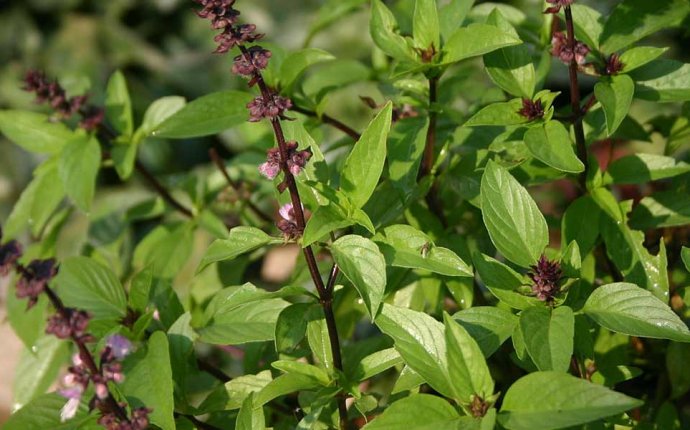
Tulsi in Ayurveda
Tulsi (ocimum sanctum), which is often referred to as holy basil, is a potent herb that has been used in India for thousands of years to treat colds, coughs, and the flu. According to Ayurveda, holy basil promotes purity and lightness in the body, cleansing the respiratory tract of toxins, and relieving digestive gas and bloating. Holy basil leaves offer a rich source of essential oil, containing eugenol, nerol, camphor, and a variety of terpenes and flavonoids. The oil is a strong antiseptic against many kinds of disease-causing organisms, including bacteria, fungi, and parasites.
As the name would imply, holy basil has spiritual as well as medicinal significance in Ayurveda. In Hindu mythology, the plant is an incarnation of the goddess Tulsi, offering divine protection. Many Indian families keep a living holy basil plant in their homes, and tend to it with great care and reverence. The plant’s woody stalks are often made into beads used in meditation malas or rosaries.
Although basil is found on every continent, holy basil is indigenous to the Indian subcontinent. It is a bushy shrub that grows to about 18 inches in height. Its leaves are oval and serrated, with colors ranging from light green to dark purple, depending on the variety. In the wild, holy basil is an annual, but it can be kept as a perennial by trimming it before it forms seeds. The plant has delicate lavender-colored flowers, and its fruit consists of tiny rust-colored nuts.
The Potential Health Benefits of Holy Basil
Holy basil’s oil has antioxidant properties that help reduce the damaging effects of stress and aging on the body. Studies have shown that it protects healthy cells from the toxicity of radiation and chemotherapy. Holy basil also has anti-depression properties. Additionally, it has been shown to help people with:
- Acne
- Asthma
- Fever
- Headache
- Heart disease
- Inflammation
- Kidney Stones
- Lung disorders
- Respiratory disorders
Holy Basil and the Doshas
Holy basil carries the bitter, pungent, and astringent tastes, and generates a warming influence on the physiology. The herb is predominantly Kapha-reducing, but it can also be used to pacify Vata and Pitta. It can, however, have a mildly Pitta-aggravating effect in people who are severely overheated.
How to Use Holy Basil
Use holy basil freely in your cooking and in making freshly brewed tea. If you’re making tea, simply cover 2 teaspoons of fresh holy basil with 1 cup of boiling water, and let it steep for about 5 minutes. Strain the leaves before drinking.
To benefit from the health-promoting effects, nibble on a few leaves every day. If you’re taking holy basil for stress relief, try growing your own plant from seeds or cuttings (directions on how to grow your own plant are below).
Precaution: Some research suggests that holy basil might have a mild anti-fertility effect, but this type of practice has been limited to rural areas of India. If you are pregnant or are trying to become pregnant, talk to your health care practitioner before taking medicinal doses of holy basil.
How to Grow Your Own Holy Basil Plant
Place the seeds between warm, moist paper towels for a day, and then plant them a half-inch below the surface in rich potting soil.
A sprout will start to break through in 10 days. Once the plant reaches a height of about 12 inches, you can 1) pinch back any flowers to keep it from going to seed; or 2) allow the plant to seed and start a new generation.














